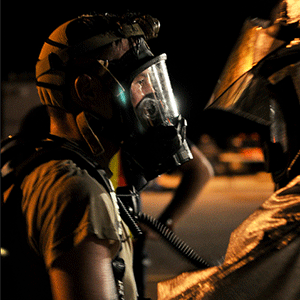October 05, 2016
Hazard Communication for Beginners

If you work in an industrial setting or in the medical industry, you no doubt have a great amount of experience with understanding OSHA labels. Most of the workers in the reliability industry have at least some familiarity with the pictograms used by the organization to indicate different hazards, and many have received special training. Still, even given all of the above, there can be some confusion about the precise meanings of the labels we find on chemicals and machinery, and trying to make sense of them during times of emergency, such as during a chemical spill or fire, can be tricky. Today, we are going to look at some of the most common OSHA hazard communications in an effort to better understand them.
A lot of the pictograms and hazard labels provided by the Occupational Safety and Health Administration seem to be self-explanatory at first glance. A skull and crossbones, for example, or a giant flame can surely only mean bad things! But beyond the simple warning of danger, these labels and pictograms provide specific information at a quick glance that tells you the exact type of danger you are facing.
For example, perhaps the most familiar OSHA hazard pictogram is "flame" or "flammable." In addition to telling us that the substance within a container (be it a spray bottle or even a tanker trunk) is flammable or easily ignitable, it also tells us the types of flammable substances we can expect. This is important because if the substance catches on fire, we have to know how to put it out.
The flame pictogram means that the container may hold the following classifications of flammables: category 1 gases, categories 1 and 2 aerosols, categories 1-3 flammable liquids, categories 1 and 2 flammable solids, self-reactive substances and mixtures of types B-f, pyrophoric liquids and solids of category 1, self-heating substances and mixtures of categories 1 and 2, organic peroxides of types B-F, and substances/mixtures that emit flammable gases when in contact with water of categories 1-3.
That is a lot of information to sum up in a simple label!
Of course, there are other OSHA pictograms that have a flame on the label. If you see an image that shows a round circle with a flame sitting atop it, known as "flame over circle," it tells us that the object contains oxidizing materials in the form of gases (category 1), liquids (categories 1-3), and solids (categories 1-3).
A pretty fear-inspiring and iconic OSHA hazard pictogram is the old skull and crossbones, which harkens back to pirate ships flying their Jolly Rogers on the high seas. If you see this symbol, then the substance inside of the container is highly toxic and can prove to be fatal. It can potentially cause death by either ingestion, touch, or inhalation.
The most common place to find these labels, if you should ever need to use them and do not have them on hand, is from the OSHA website. There, you can find safety data sheets, labels, pictograms, and a slew of information on safety regulations.
One final note: There are instances where you may find more than one hazard pictogram present on a label. For instance, you might see the "explosives" image next to a "compressed gas" picture. In this event, you are being warned that multiple dangers exist and you should use cautions for both. The "compressed gas" symbol tells us that compressed gases are present (they can be in dissolved, liquefied, or refrigerated forms), while "explosives" signifies that the substance could be an unstable explosive, self-reactive mixture, or another type of explosive.